 Death on the tracks: early fatalities
Death on the tracks: early fatalities
In the very early days derailments were common, but as the trains hardly ever reached a speed of more than twenty miles an hour, these were mere inconveniences and did not result in any loss of life or serious injury. In most cases, a general call would be put about the train to have the male passengers haul the car back onto the track, and away the train would go. The first real death on the railroad, excepting those who blundered out in front of the trains, occurred on the Camden & Amboy line, when a train broke an axle and two people died, everyone else on the train including actor Tyrone Power (yes, that one) was injured, the only one to escape unscathed being former president John Quincy Adams. Future railroad magnate Cornelius Vanderbilt broke his ankle and swore never to ride on the railroad again. He obviously changed his mind, considering how much money the railroad would end up making for him.
Once trains began running at night, or overnight, the problem of how the driver was supposed to see the track in front of him became an issue. Crazy as it may seem, an early idea, proposed - and used for a short time by - the South Carolina Canal Railroad Company, was to set fire to a wagonload of sand and wood and strap it to the front of the locomotive. Unsurprisingly, this was quickly ditched as being too damned dangerous. Next various lamps were tried out, first oil and then kerosene, which proved better suited to the purpose, with large mirrors to reflect the light. In Britain, with the railway enclosed by fences and running on their own track, not through any town’s main street, these were not so much a priority, and only came into use much later. But in America, where the oft-sung phrase “don’t fence me in” held sway, and animals and sometimes people could wander in front of the train - especially hard to see at night - it was vital the driver be able to see ahead of him through the dark.
Animal magic: Farmers on the warpath
While animals were by far the largest percentage of casualties on the early railroads, and could easily derail a train, railroad companies fought a running battle with farmers who had developed an instinct for making money off them. The idea was that they would be paid generously by the railroad if any of their livestock was killed by their trains (despite the fact that it could only have been the fault of the farmers) and so they decided to start taking their least healthy and oldest animals closer and closer to the tracks, sometimes even feeding them on the rails themselves. Then, when the animal was hit and killed by a train, they would claim handsome compensation from the railroad company. What happened if there were human fatalities, or damage to engine or cars, I don’t know, and it seems the farmers didn’t care as long as they got paid.
But as time went on, like all schemes this one began to unravel, as the railroad bosses became wiser to the tactics of the unscrupulous (and, it must be said, cruel and heartless towards their cattle) farmers, and reduced the amount they were prepared to pay for animals killed on the railroad. This infuriated the greedy farmers, who began a running war with the railroad. They obstructed the lines, tampered with the switches and threw stones and rocks at the trains, and were in the process of plotting to set fire to one when the railroad, having infiltrated their ranks, caught them in the act and had them arrested. Twelve men were sentenced and jailed.
Sleep on it: George Pullman, inventor of the first proper sleeping carriages
 George Pullman (1831 - 1897)
George Pullman (1831 - 1897)
Early railroad travellers had a lot to thank George Pullman for. Even travellers today owe him a debt of gratitude, as they ride in the luxury sleeping cars that bear his name still. Until he came along, sleeping on a train was a dangerous and uncomfortable business, and unlikely to yield much in the way of rest. The first of the lines to provide any sort of sleeping accommodation for their passengers was the Cumberland Valley Railroad, and all it did was split a normal day car into two, add some basic padding and throw in a stove to heat the place. There was no bedding - bring your own with you or sleep in your clothes - and the stove was, of course, not fastened down or secured in any way, so you had a pretty good chance of burning to death if the train rounded any sudden curves or stopped suddenly. Carriages of this sort were, it will be readily understood, for men only, as there was no privacy and several men would sleep to a car. Americans would endure discomfort and sleeplessness for another thirty or so years.
I read a little ahead and see this man was no saint. In fact, not to put to fine a point on it, he appears to have been a heartless, tyrannical bastard who cared more about his bottom line than the people who worked for him. So, a typical American businessman then. Let’s be fair, and remove that word. A typical businessman of the time, like so many others, out to make a profit and piss all over anyone who got in his way. But his achievements and his contribution to the history of the railroad can’t be ignored, so let’s not do that, while at the same time let’s throw his despotic behaviour and his shameful treatment of his workers into the harsh light of non-revisionist history.
As a young engineer, only in his twenties, Pullman arrived in Chicago and immediately set about creating a reputation for himself by working out how to raise hotels and other buildings off the ground, for foundation work or to just raise it to a new street level. Apparently he did this using thousands of jacks, hand-operated by hundreds of men, raising the building an inch at a time. Taking his cue from the packet boats he used to travel as a kid on the Erie Canal, Pullman designed the first proper sleeping car, though history says he was not its inventor, that honour going to a Theodore Woodruff. However such cars have borne his name right up to this day, and he may as well be said to be the father of the sleeping car.

Pullman cars, as people quickly came to know them, stood for two things: luxury and comfort. And a third, of course: expense, but then, you don’t get the finer things in life without paying for them, and people were very much prepared to pay up to FIVE TIMES as much for a Pullman coach as for a normal one. The difference was staggering, and you’d have to say the extra outlay, if you could afford it, was certainly worth it. Lush carpeting, comfortable bunks, gilded ornamentation, chandeliers - these cars were as close a relative to the early sleepers as the Wright Bros flyer is to a 747 Jumbo Jet. Improved suspension, a quieter - and above all, safer ride, the Pullmans would have been worth it on these improvements alone.
But there was more.
Pullman decided his sleepers should be like mobile hotels, and to that effect engaged recently freed black men to serve as combination porters, stewards, valets and waiters. They would show the passenger to their carriage, have the bed made (no cold plank for resting your head on here, and forget bringing your own bedding: all provided for, and the best quality too), settle them as they wished, call them when dinner was ready… oh yeah, there was an attached kitchen! These men, though better paid than they had been as slaves, obviously, were reportedly not that well paid, and made up most of their income via tips from the wealthy passengers, which they were allowed to keep.
Although there was of course no union, Pullman porters were still required to contribute to “group insurance policy”, which so far as I can see was of no benefit to them at all, as there was no compensation forthcoming for any who died or were injured in the service, and there was no retirement or pension plan. They were required to turn up for work two hours before the train departed, but did not get paid for this time, as their working period was seen to begin only when the train departed. Moreover, every Pullman porter had to be assigned to a car - there were none who were entitled to one regularly - so they could stand around for a whole day waiting to be given one, and if it didn’t happen, they went home without being paid. In some ways, these men must have felt almost as if they were still slaves.
Still, membership of the Pullman Association did carry with it some benefits, if only in terms of recognition and reputation, and the porters had a high social standing in their own black community, where many ex-slaves (or freedmen) struggled to secure any sort of employment after the war. Pullman’s fortune, basically, was made with the assassination of President Lincoln, which seems a harsh thing to say, but when the president’s body was toured throughout the States on a train, so that everyone could get a chance to pay their respects to the great Emancipator, it was in a Pullman car he made his last trip, and the fame of the car - and its maker - spread far and wide. Soon, everyone who could afford to do so wanted to emulate the president (though without the inconvenience of being dead, obviously) and demand for the Pullman cars peaked, as did prices, following the indefatigable law of supply and demand. By 1875, ten years after the first one was produced, Pullman had over seven hundred cars in operation with the railroads.
And then came Pullman, Chicago.

I can’t say if this was the first company town ever, but it seems to have been one of the first. Pullman bought 4,000 acres in Chicago near Lake Calumet on the Illinois Central Railroad and set an architect, Solon Spencer Beman, to design a town in which his employees could live. It proved to be one of the most successful towns of the age, with good housing, indoor plumbing, with shops, theatres, parks, hotels, but pointedly no bars, no casinos, no whorehouses, nowhere where “undesirable behaviour” could flourish. It was his hope to avoid the violence and drunkenness prevalent in many American towns, and which led to unrest and trouble. And mostly it did.
But Pullman wanted complete control over his new town, and prohibited independent newspapers, town meetings, public speeches or open discussion. All the inhabitants - his workers and their families - had to conform to rigorous standards set down by him, behavioural and hygienic, and anyone who did not come up to the mark could be fired and ejected from the town. He also banned charitable organisations and, as nobody would pay rent to use the church, it was an empty shell. His running of the town was compared to the iron grip of Count Otto von Bismark in Germany, or, as one anonymous Pullman employee put it: “We are born in a Pullman house, fed from the Pullman shops, taught in the Pullman school, catechized in the Pullman Church, and when we die we shall go to the Pullman Hell.”
Quite contrary to his intentions, or expectations, such total repression was only going to fuel the fires of unrest and rebellion, and when, as a result of falling demand for his cars during the Panic of 1893 (yes, another one; there were quite a few, it seems) he cut wages, but did not lower rents in his town, or the price of any of the amenities, the stage was set for bloody confrontation.
Comments on Pullman’s inhuman tactics ran to
"I have seen men with families of eight or nine children crying because they got only three or four cents after paying their rent."
Another described conditions as
"slavery worse than that of Negroes of the South".
Many of the workers joined the recently-formed American Railway Union, which instigated a boycott on Pullman’s cars, refusing to allow trains to carry them or their workers to work in them. The Great Pullman Strike of 1894 had begun.
Pullman was not interested in negotiating with the strikers. On the day the strike began he locked up his home and business and left town. One of his contemporaries thundered at his refusal to even talk to his workers:
"The damned idiot ought to arbitrate, arbitrate and arbitrate! ...A man who won't meet his own men halfway is a God-damn fool!"

Three days into the strike things began to go bad. Strikebreakers, many of them black, had been enlisted by the railroad to take the place of the striking workers, and at a meeting to rally support for the strike things exploded. It was supposed to have been a peaceful meeting, but like most of these things, agitators within the crowd shouted the loudest and buildings were burned, a locomotive derailed, and other transport workers came out in sympathy, enlarging the strike and calling it to the urgent attention of the authorities. They of course responded with peace mediators and offers of recompense, and everyone sat down around the table and worked it… yeah. Right.
The President himself gave the order for an injunction to be issued, commanding the workers to return to their posts, and when that was ignored, sent in the troops. Thirty strikers were killed and fifty-seven wounded. Support among railroad workers other than those in the ARU was divided: many wanted their trains to run, many saw the workers’ grievances as legitimate. The public, as is usually the case, didn’t care; they just wanted to be able to travel on the trains, and besides, weren’t all these men black, recently-freed slaves? How ungrateful! The newspapers played on this, calling the workers “aliens” and “immigrants” (which in a lot of cases was true, but irrelevant to the reasons for the strike) and ignoring the very real fact that this was more a clash of rich versus poor, big business versus the little guy, and very much a case of playing politics with people’s lives.
In the aftermath, Pullman was ordered to sell his town and it became just another suburb of Chicago, if one with a chequered past. He did not survive long past the infamous strike, his reputation destroyed by his intransigence and the memory of the workers who had been killed by the troops. He died in 1897, and his family were so concerned that vengeful employees might dig his body back up that he was buried in a lead-lined coffin sealed in a block of concrete, and surrounded with more concrete, a network of steel bars and yet more concrete. The entire burial process took two days. Twenty-eight years later, the Brotherhood of Sleeping Car Porters became one of the first, and most influential African-American unions in the USA.
By George! That’s not my name!
Oh, hilarious history looks us in the face once again and sticks its tongue out at us, though in this case it’s almost more tragic-comic. The practice on slave plantations had been to call every male slave by the given name of the slavemaster or owner. So if they were called, for instance, Tom, every slave would be known as Tom. When Pullman began recruiting porters, whether with or without his knowledge or approval, passengers called every Pullman porter George, after him. This obviously irritated the porters, but it was not their place to speak up and correct the white folks, so they had to take it. Eventually, there was a placard placed on each Pullman car advising the name of the porter, and the practice died out.
However (and this is the funny/tragic part) other people named George took offence at their name being used for Pullman porters, and the Society for the Prevention of Calling Sleeping Car Porters George was born. No, really. Well, initially apparently it was a joke, but at its height it boasted over 31,000 members, including (it was claimed) Babe Ruth and King George V. Apparently you could join the SPCSCG as long as your first or last name was George. Nobody in the society (all exclusively white of course) cared about getting a measure of dignity for the porters, just that their names not be used (presumably if they had all been called James none of the Georges would have cared - whether a new society might have sprung up called SPCSCJ or not is another matter) but their efforts did obliquely change the practice, and soon porters were being referred to by their given name. Oh, white privilege! What lessons you teach us!
One man who swam against the flow though was the famous comedian Jackie Gleason, as related by Biggs, son of a sleeping car porter, in the book
The Pullman Porters: From Servitude to Civil Rights: “One of the most remarkable stories I liked hearing about was how when Jackie Gleason would ride ... all the porters wanted to be on that run. The reason why? Not only because he gave every porter $100.00, but it was just the fun, the excitement, the respect that he gave the porters. Instead of their names being George, he called everybody by their first name. He always had like a piano in the car and they sang and danced and had a great time. He was just a fun person to be around.”
However, historian Greg LeRoy describes how most customers, and the company, saw them:
"A Pullman Porter was really kind of a glorified hotel maid and bellhop in what Pullman called a hotel on wheels. The Pullman Company just thought of the porters as a piece of equipment, just like another button on a panel – the same as a light switch or a fan switch."






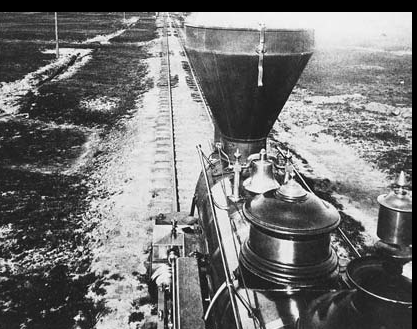


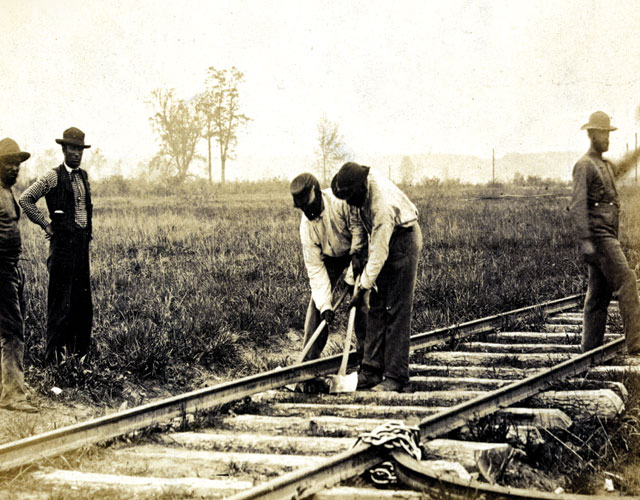


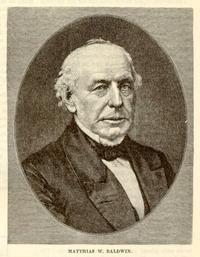




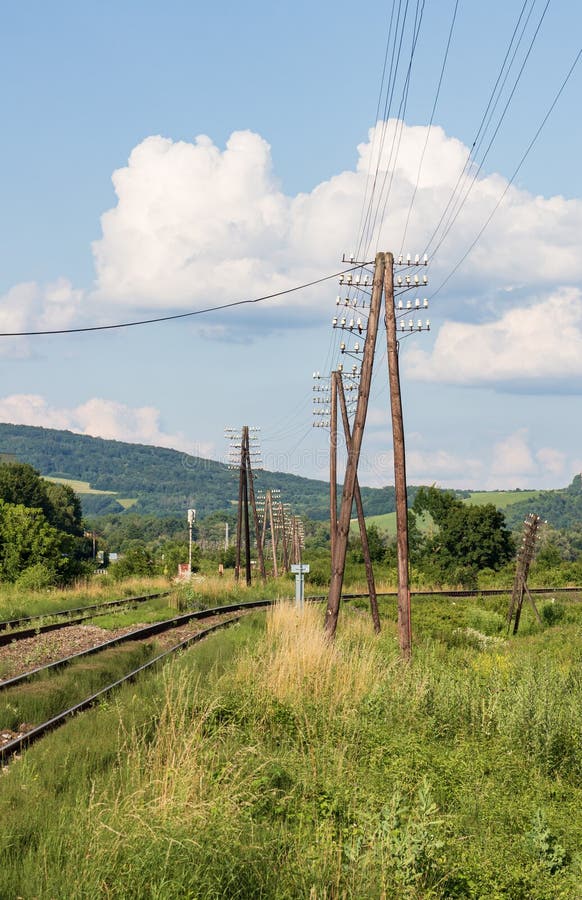
















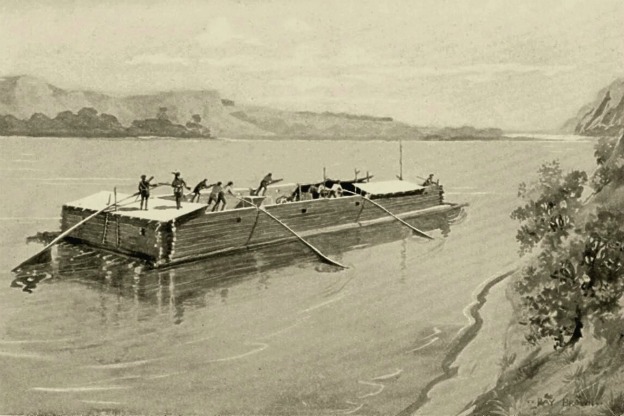



 Linear Mode
Linear Mode
